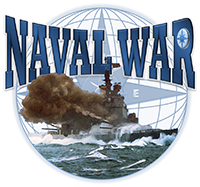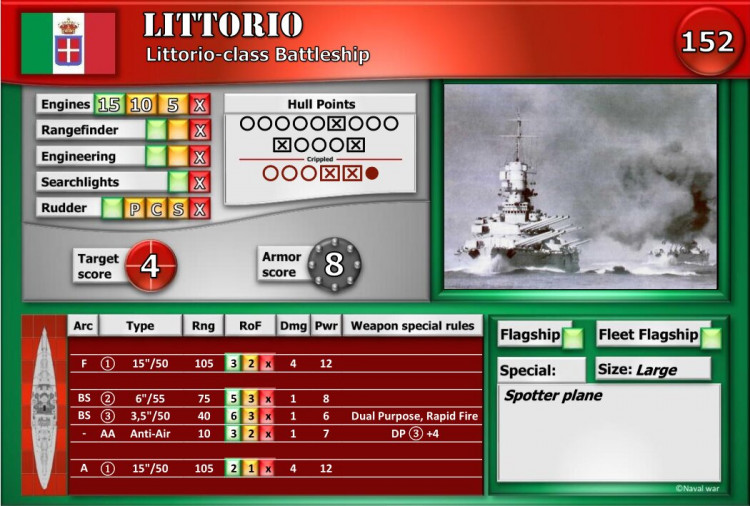Littorio-class Battleship
Description
Ships in class: Littorio (Italia), Vittorio Veneto, Roma, Impero
The Littorio class, also known as the Vittorio Veneto class, was composed of four ships: Littorio, Vittorio Veneto, Roma, and Impero. Only the first three ships of the class were completed, however. Built between 1934 and 1942, they were the most modern battleships used by Italy during World War II. The Littorio-class ships were developed in response to the French Dunkerque-class battleships, and were armed with 381-millimeter (15.0 in) guns and had a top speed of 30 knots. The design was considered by the Spanish Navy, but the outbreak of World War II interrupted construction plans.
The first two ships, Littorio and Vittorio Veneto, were operational by the early months of Italy's participation in World War II. They formed the backbone of the Italian fleet, and conducted several sorties into the Mediterranean to intercept British convoys, though without any notable success. Roma joined the fleet in June 1942, though all three ships remained inactive in La Spezia until June 1943, when all three were damaged in a series of Allied air attacks on the harbor.
In September 1943, Italy capitulated and signed an Armistice with the Allies. Littorio was then renamed Italia. The three active battleships were transferred to Malta before they were to be interned in Alexandria. While en route to Malta, German bombers attacked the fleet with Fritz X radio-guided bombs, damaging Italia and sinking Roma. Nevertheless, Italia and Vittorio Veneto reached Malta and were interned. The incomplete Impero was seized by the Germans after Italy withdrew from the war and used as a target, until she was sunk by American bombers in 1945.

